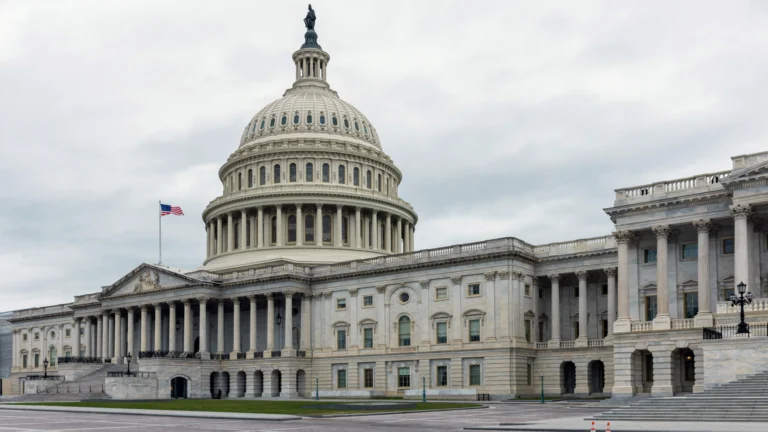A Solo 401(k) plan is designed for self-employed individuals or small business owners with no full-time employees (other than a spouse). It offers a powerful way to save for retirement while maximizing tax benefits.
Because a Solo 401(k) does not cover non-owner employees, the IRS historically has not provided the same tax incentives that apply to larger employer-based retirement plans. Congress generally reserves those additional credits for businesses that offer retirement benefits to their employees.
However, the SECURE Act 2.0, signed into law in December 2022, introduced new opportunities. For the first time, eligible Solo 401(k) plans can qualify for a tax credit of up to $1,500. Businesses that adopt a Solo 401(k) plan with an auto-enrollment feature may receive a $500 annual credit for three years—essentially offsetting the cost of establishing the plan. You can set up a Solo 401(k) for free!
Key Takeaways
- For the first time, SECURE Act 2.0 allows Solo 401(k) plans to potentially qualify for a $500 annual tax credit for three years, totaling up to $1,500.
- While many credits in SECURE 2.0 exclude Solo 401(k)s, the auto-enrollment credit does not, giving sole proprietors and small business owners an unexpected benefit.
- Business owners can claim the credit using IRS Form 8881, but IRS guidance could further clarify eligibility in the future.
What is SECURE Act 2.0?
SECURE Act 2.0 is a comprehensive retirement reform package included in a $1.7 trillion federal spending bill passed in December 2022. Building on the original SECURE Act of 2019, this legislation was designed to make retirement savings more accessible, flexible, and beneficial for both workers and employers. The law contains more than 90 provisions that touch nearly every aspect of retirement planning. Its central goals are to:
- Expand access to retirement plans for small businesses and their employees.
- Encourage higher savings rates by offering new incentives and streamlined plan features.
- Provide additional flexibility for savers approaching or already in retirement.
For small businesses and the self-employed, SECURE Act 2.0 is particularly significant. It introduces enhanced tax credits to reduce the cost of setting up a retirement plan, such as the Solo 401(k). By offsetting plan startup and administrative expenses, Congress aims to make it easier for entrepreneurs and small business owners to invest in their own retirement future—while remaining fully compliant with IRS rules. Let’s take a closer look to the relevant provisions.
New 401(k) Start-Up Credit
Current law offers a tax credit to a small business (up to 100 employees) that adopts a new qualified plan, which can apply for up to three years, equal to the lesser of (1) 50% of the employer’s start-up costs, or (2) as much as $5,000. 50% would be increased to 100% in the case of employers with 50 or fewer employees. The credit is available to qualified plans (DB/DC), SEPs, and SIMPLEs with “non-highly compensated employees.”
By definition, a Solo 401(k) does not include any non-owner or non-highly compensated employee. Therefore, this new start-up plan tax credit does not apply to a Solo 401(k) plan.
Employer Contribution Credit
For taxable years beginning after 2022, the new employer contribution tax credit is a decreasing percentage of the amount contributed by the employer for each employee earning no more than $100,000 per year, up to $1,000 annually per employee, over the plan’s first five years.
Like the start-up plan tax credit, this credit is only available if contributions are made to non-highly compensated employees. Again, this employer contribution credit does not apply to a Solo 401(k) plan.
Auto-Enrollment Credit
Under SECURE Act 2.0, most new 401(k) plans established after December 29, 2022, will be required to include an automatic enrollment feature beginning in 2025. To encourage adoption, the law provides a $500 annual tax credit for the first three years that auto-enrollment is offered, for a total credit of up to $1,500.

What makes this provision unusual is that the legislation does not specify that a business must have any non-highly compensated employees to claim the credit. This has caused debate among tax and ERISA professionals, since a Solo 401(k) is, by definition, maintained by a business with no non-owner full-time employees. In practice, there is no one to “auto-enroll” in a Solo 401(k) other than the owner.
Many experts believe this omission may have been a drafting error, as there is little reason for Congress to incentivize a business owner to auto-enroll themselves. However, because the statutory language does not exclude Solo 401(k) plans, an eligible business owner can take advantage of the credit simply by including an auto-enrollment provision in their Solo 401(k) plan documents.
To claim the credit, businesses with a Solo 401(k) that adopts auto-enrollment may file IRS Form 8881, generating up to $500 annually for three years.
⚠️ Important Note: The IRS has not yet issued formal guidance clarifying whether the auto-enrollment credit was intended to apply to Solo 401(k) plans. While the plain language of SECURE Act 2.0 suggests eligibility, future regulations or IRS guidance could change how this provision is interpreted.
Book a free call with a self-directed retirement specialist
- Review your self-directed retirement options
- Learn about investing in alternative assets
- Get all of your questions answered
Tax Credit vs. Tax Deduction
When planning for retirement, it’s important to understand the difference between a tax deduction and a tax credit. Both can reduce what you owe the IRS, but they work in very different ways. Knowing how each one affects your bottom line helps you make the most of the tax advantages offered by a Solo 401(k) or other retirement plan.
A tax deduction reduces the amount of income that is subject to tax. For example, if you earn $100,000 and take a $10,000 deduction, your taxable income drops to $90,000. The savings you receive depend on your tax bracket, since the deduction lowers your income before the tax rate is applied.
A tax credit, by contrast, directly reduces the amount of tax you owe, dollar-for-dollar. If you owe $5,000 in taxes and qualify for a $1,000 credit, your bill is reduced to $4,000. Because of this direct impact, credits are often considered more valuable than deductions of the same amount.
In summary, deductions lower your taxable income, while credits reduce your actual tax bill. Both are important tools for retirement savers, but tax credits (like those introduced in SECURE Act 2.0) can provide especially powerful incentives for small business owners establishing a retirement plan.
Why Do I Need to Set Up a Solo 401(k)?
A Solo 401(k) plan is perfect for any sole proprietor, consultant, or independent contractor. To be eligible to benefit from the Solo 401(k) plan, investors must meet just two eligibility requirements:

- The presence of self-employment activity, and
- The absence of full-time employees.
Here are the major advantages of establishing a Solo 401(k) plan:
- High Contribution Limits: A plan participant can make annual contributions of up to $70,000 annually with an additional $7,500 “catch-up” contribution for those age 50 or older in 2025. (There is an additional catch-up between the ages of 60 and 63).
- Loan Feature: A plan participant is eligible to borrow up to $50,000 or 50% of their account value (whichever is less) for any purpose, including paying credit card bills, mortgage payments, personal or business investments, and more. The loan has to be paid back over five years at least quarterly at a minimum interest rate. Failure to repay the loan back may lead to taxes and penalties.
- “Checkbook Control”: One of the most popular features is that it does not require you to hire a bank or trust company to serve as trustee. This flexibility allows the plan participant (you) to serve in the trustee role. Making an investment is as simple as writing a check.
- Mega Backdoor Roth: This strategy allows one to contribute, dollar-for-dollar up to the annual limit, in after-tax funds. You can then immediately those funds to Roth and enjoy tax-free withdrawals during retirement.
- Secret Weapon for Real Estate Investors: Pursuant to IRC Section 514, a 401(k) is not subject to the Unrelated Business Taxable Income (UBTI) tax on the use of a nonrecourse loan in connection with the purchase of real estate making it the best way to invest in real estate with retirement funds.
Conclusion
Because of the way SECURE Act 2.0 is written, a business that establishes a Solo 401(k) plan and includes an auto-enrollment feature may qualify for a $500 tax credit each year for three years, for a total credit of up to $1,500. This means that sole proprietors and small business owners with no full-time employees could reduce their tax liability simply by adopting a Solo 401(k) plan that contains this provision. Essentially, you can set up a Solo 401(k) for free.
While many professionals believe Congress may not have intended this outcome, the plain language of the law currently allows eligible Solo 401(k) plans to benefit. Until the IRS provides further clarification, this represents a valuable opportunity for self-employed individuals to establish a retirement plan while offsetting costs through available tax credits.
Ready to Set Up Your Solo 401(k)?
At IRA Financial, we specialize in Solo 401(k) plans designed for entrepreneurs, consultants, and small business owners. Our team ensures your plan is structured correctly, maximizes available tax benefits, and stays compliant with IRS rules—so you can focus on building your retirement wealth.
👉 Schedule a Free Consultation to explore how a Solo 401(k) fits your business.
👉 Confident and ready to begin? Open Your Solo 401(k) Account Today.
Frequently Asked Questions
Who is eligible to set up a Solo 401(k)?
A Solo 401(k) is designed for self-employed individuals or small business owners with no full-time employees other than a spouse or other business owners.
How does the SECURE 2.0 auto-enrollment credit work for Solo 401(k) plans?
If you include an auto-enrollment feature in your Solo 401(k) plan documents, you may qualify for a $500 tax credit each year for three years, even if you have no employees to auto-enroll.
Is this credit guaranteed for Solo 401(k) owners?
The law’s language currently allows it, but many experts believe Congress may not have intended Solo 401(k) plans to benefit. The IRS could issue clarifying guidance in the future.
How do I claim the auto-enrollment tax credit?
You can claim the credit by filing IRS Form 8881 with your tax return for each eligible year.
What are the other major benefits of a Solo 401(k)?
Solo 401(k)s allow high annual contribution limits, the ability to borrow from your plan, Roth contributions (including the “Mega Backdoor Roth”), and tax-efficient real estate investing.



